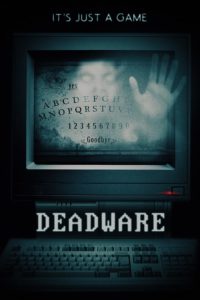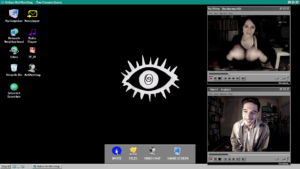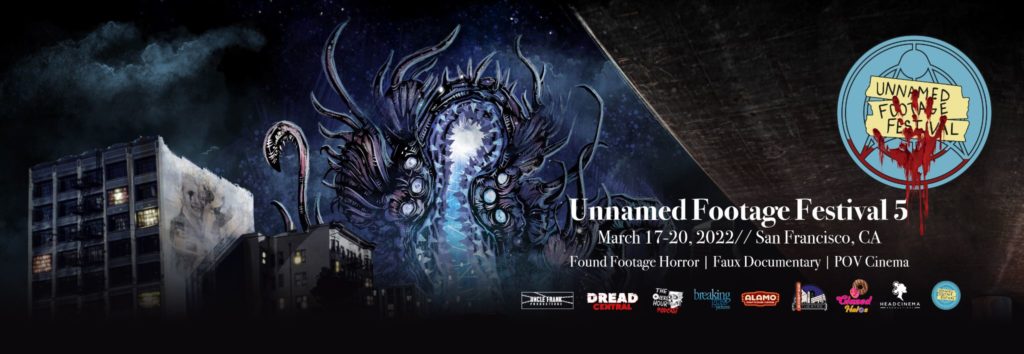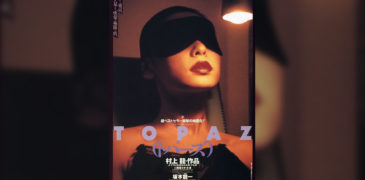
Deadware is a 2021 American-found footage horror, written and directed by Isaac Rodriguez. Mostly known for directing horror shorts such as We All Fall Down (2011) and Russian Doll (2019). In addition, Rodriguez has created a number of feature-length productions including Unknown Visitor (2019) and Last Radio Call (2022) in addition to Deadware.
“In 1999, two friends use a webcam for the first time and stumble across a mysterious browser game that may be haunted.”

Being a found footage film, Deadware self contains its framing device inside a video call and the shared desktop controlled by both protagonists. Though the film cuts to focus on certain parts of this display, this framing remains unbroken throughout with the only additional character’s appearance occurring through her addition to the video chat (though never appearing in person). Although this static framing device could become tiring, the film efficiently utilizes this consistent framework to create an enigmatic story along with an effectively suspenseful atmosphere in leu of expressive cinematography.
The film’s main progression revolves around the protagonists exploring the game “House of Hunger”, a browser-hosted point-and-click game similar to other popular games hosted on sites in the 90s such as Newgrounds. House of Hunger presents this style of media accurately, the use of pre-rendered 3d backgrounds with digitized sprites for characters is very reminiscent of older design–fitting the visual aesthetics perfectly.
Taking inspiration from a number of different internet gaming urban legends, the game instantly brings to mind the likes of Sad Satan and Killswitch. However, House of Hunger presents itself as a unique piece of gaming rather than rehashing an already popularised internet mystery.

The veritable glue that keeps this simple idea from falling apart at the seams, the lead protagonist’s, Jay and Megan (Ali Alkhafaji and Sarah Froelich), deliver an impressive performance throughout. Their conversation together has a natural flow, reaffirming their past friendship together yet with an understandable inclining of disconnection between them. Consequently, the feeling of catching up with an old friend after losing contact for a period is well realized.
Set in the distinct time period of 1999, Deadware retains the visuals of the era in vivid detail. The domicile of each character littered with media and tech prolific in the era; shelves of VHS and vinyl, tiny screened CRT TVs as well as primitive mobile phones all subtly reinforce this time period. Additionally, the clothing the protagonists wear feels modern enough to not seem outdated yet ambiguous enough to still feel appropriate for the time. In spite of this attention to detail, a few minor characteristics of modern times managed to slip through into the production. Presented in a 16:9 widescreen ratio, this display type wasn’t fully implemented in computing until 2008, as well as screen share capabilities not being available until the 2000s. Even so, these are very minor details and at no point drew attention away from the story.
Deadware is an interesting self-enclosed piece of found footage cinema, providing enough descriptive storytelling to progress its fairly in-depth story effectively for the possible restrictions that come with a fixed framing method. Including well-built, congenial characters as well as their believable chemistry together, the production utilizes these aspects to create a genuinely creepy atmosphere at times; triumphant in the intended structure and pacing that a bigger production budget could overshadow.
Deadware (2021) is Screening as Part of the 2022 Unnamed Found Footage

More Film Reviews
Vampires vs. The Bronx, Night Teeth, and now J. J. Perry’s Day Shift: someone over at Netflix is into the prospect of investing in vampire horror comedies of varying quality…. Tokyo Decadence, also known as Topaz or Dreams of Topaz, is a 1992 S&M pinku drama, written and directed by Ryû Murakami. Although seen as a cult classic in Japan,… Gorenography is a 2021 documentary hosted by director Tony Newton. The documentary delves deep into the world of extreme cinema, divulging an uncensored, unbridled look at this niche underbelly of… Struggling to quit smoking, Piotrek’s fiancée signs him up for a course at an institute focused on providing help for men. However, after a room mix-up, he finds himself in… Edge of Sanity is a 1989 American slasher horror, directed by French director Gérard Kikoïne in one of his last films in the director’s chair. The story combines elements from… Who knew queer mommy vlog culture could be this unhinged? The Rebrand (2024), written and directed by Kaye Adelaide and with additional writing from Nancy Webb, is a wickedly…Day Shift (2022) Film Review – A Fun Vampire Comedy That Doesn’t Quite Hit the Jugular
Tokyo Decadence (1992) Film Review – The Decadence of Man
Gorenography (2021) Film Review – A Conscientious Exploration of Extreme Cinema Directors
Alpha Male (2022) Film Review – The Absurd Temple of Bromanity!
Edge of Sanity (1989) Film Review – Anthony Perkins Exploitation Classic
The Rebrand (2025) Film Review – Turning Queer Mommy Content Into Nightmare Fuel [Unnamed Footage Festival]

Hey there, I’m Jim and I’m located in London, UK. I am a Writer and Managing Director here at Grimoire of Horror. A lifelong love of horror and writing has led me down this rabbit hole, allowing me to meet many amazing people and experience some truly original artwork. I specialise in world cinema, manga/graphic novels, and video games but will sometime traverse into the unknown in search of adventure.






![The Rebrand (2025) Film Review – Turning Queer Mommy Content Into Nightmare Fuel [Unnamed Footage Festival]](https://www.grimoireofhorror.com/wp-content/uploads/2025/03/The-Rebrand-2024-Horror-Movie-Review-365x180.jpg)